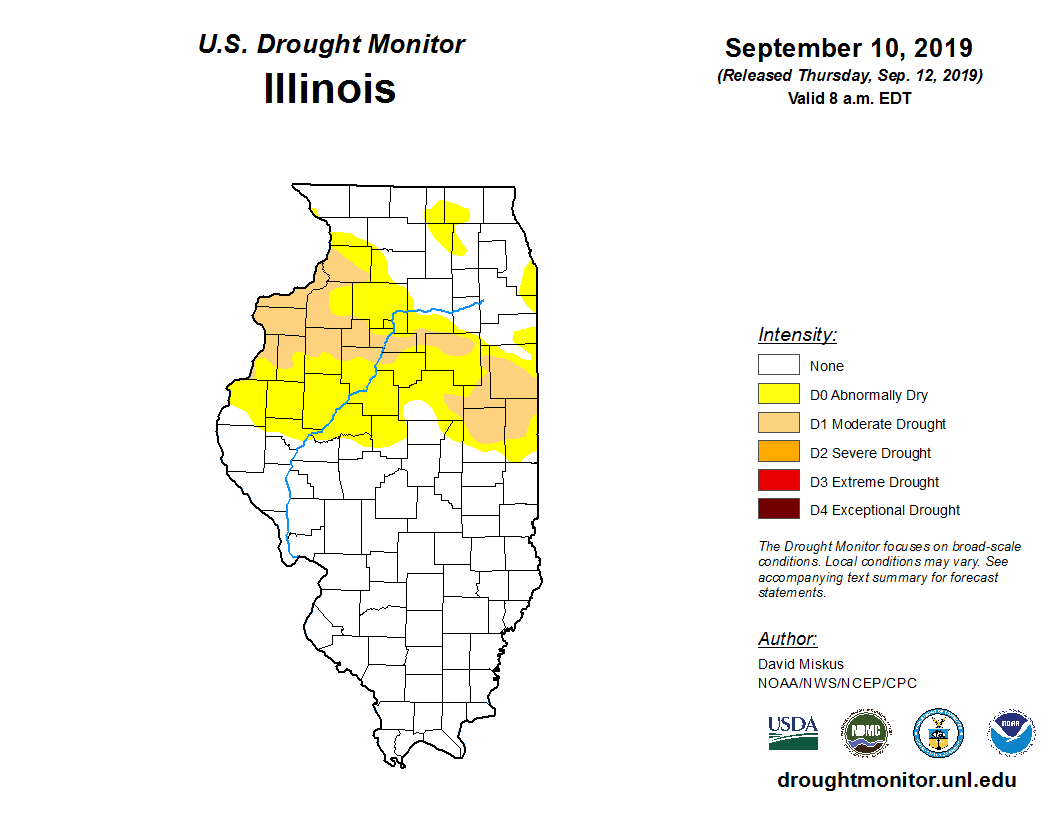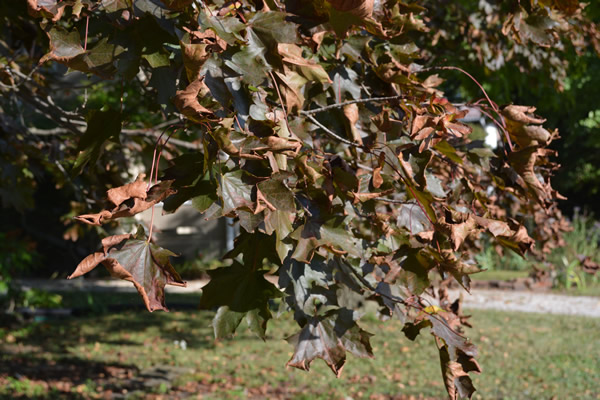Issue 12, September 30, 2019
Norway Maple Leaf Scorch
Over the last two weeks, I have received several reports of Norway maples with scorched leaves and extensive defoliation. The maroon to purple-leaved cultivars seem to be especially affected, with nearly every tree that I’ve observed in Champaign and Vermilion counties showing these symptoms. The University of Illinois Plant Clinic exampled a few samples, but was unable to identify any pathogens that would be associated with scorching and defoliation. We suspect the symptoms are related to prolonged, abnormally dry conditions affecting parts of the state.

Figure 1. U.S. Drought Monitor showing portions of Illinois under abnormally dry and moderate drought conditions. September 10, 2019,
Scorch is most common following prolonged periods of dry, windy weather or bright sunshine when the roots are unable to supply water to the foliage as rapidly as it is lost through the leaves by transpiration. The injury also is most common where plants are growing in an unfavorable location, such as in sandy or gravelly soil, near obstructions or pavement that restricts the area for root growth, or on an exposed windy slope.

Figure 2. Noway maple with scorched leaves
While the scorching and defoliation may be alarming, it is unlikely to cause long-term harm to the trees. Affected trees should fully recover with new growth during the spring. In future growing seasons, plants susceptible to scorch can be aided by mulching to conserve soil moisture. Supplemental watering may also be necessary during extended periods of hot, dry weather.
Author:
Travis Cleveland